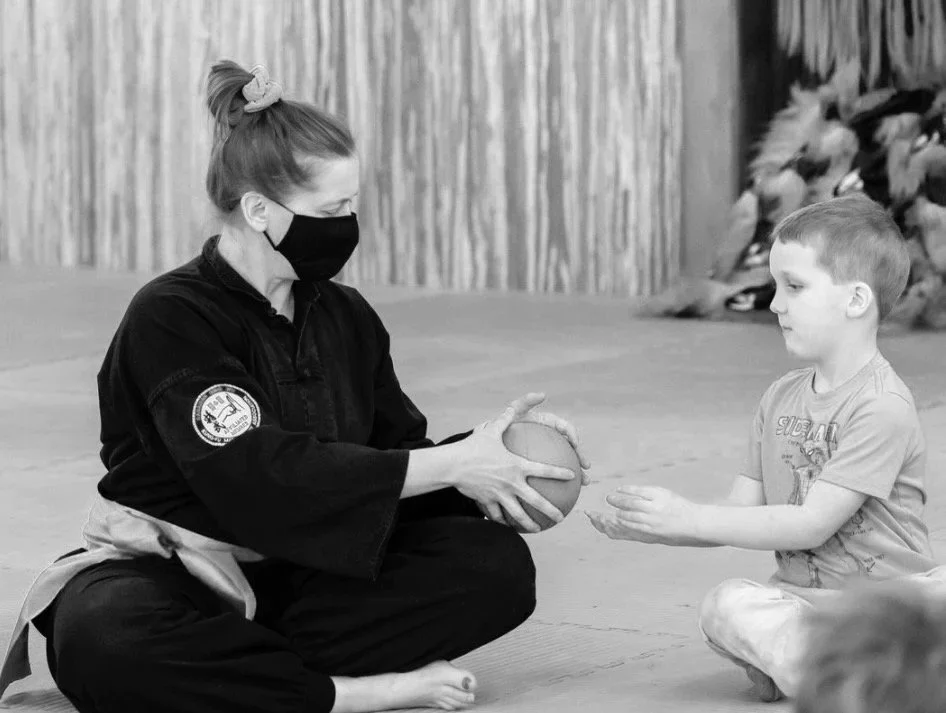As a parent, we want our children to develop essential skills that will aid them to succeed in whatever they decide to pursue. The majority of kids, at a young age, are not self motivators. They cannot yet understand the value of hard work…the value of putting in effort today for a goal they won’t reach until tomorrow…or next week…or next year. By utilizing the 1-on-1's, you can help your child reach their goals, thereby showing them that with a little bit of effort on a consistent basis, anything is possible. I can guarantee you that once they recognize their hard work breeds results, they will start to take these steps towards success on their own because you have shown them how.
As a student, the 1-on-1's provide a platform to ask questions or cover topics specific to the individual. Whether it be to improve a skill, or to get ideas of what to focus on, the opportunity for 1-on-1 instruction is incredibly beneficial. Many students have utilized the 1-on-1's to obtain knowledge above and beyond their current class level. Some learning entire forms exclusively through 1-on-1's and propelling their personal progress to incredible heights. Having said that, the need to have a topic or question in mind is not a prerequisite for the 1-on-1 to be successful. Oftentimes, the meetings that begin without a specific plan end up being the most fun and engaging. If the student and instructor can connect in a more personal way, the time has been well spent.
As an instructor, making those connections is the main objective for the 1-on-1's. If Kung Fu enters the equation, that is simply a bonus. Everyone learns differently. Everyone thinks a bit differently. Everyone has different skills and capabilities. This type of interaction creates an opportunity to connect with our students on a personal level that is not always possible in a classroom setting. Once that relationship is established, both teaching and learning become effortless.
Whether you are a parent, or a student, I encourage you to take advantage of this amazing tool. And I am confident that with regular use, you will see the tremendous value.
Who can utilize the 1-on-1s?
Any student or parent/guardian can utilize the 1-on-1's.
How do I book?
On the main home page of KwoonTalk, you will find a link along the left called “One on One Appointments”. Simply click on that and follow the instructions to choose and book an appointment. Should you have any issues with booking, please reach out.
Who should I book with?
Although any of the instructors will be able to answer most questions, you’ll likely want to book with an instructor that you, or your child would be the most familiar with. If you are unsure, the following indicates which instructors are involved with the various classes.
Lil’ Leopards/Tiny Tigers
Sifu Brinker
Sifu Rybak
Sihing Vantuil
Sidai Bjorkquist
Todai Ferris
Young Dragons 1/2
Sifu Brinker
Sifu Rybak
Sihing Vantuil
Sihing Ward
Sidai Bjorkquist
Todai Ferris
Teen/Adults
Sifu Brinker
Sifu Rybak
Sihing Vantuil
Sihing Csillag
Sihing Lindstrom
Sihing Ward
Sidai Bjorkquist
How often should I book?
As a parent with questions regarding the program or your child's progress, feel free to book as needed. For students, we have seen the most success with those that book regular weekly or bi-weekly appointments. All students are eligible for a 1-on-1 every week as part of their tuition.
What if my child has nothing to ask or talk about?
A predetermined topic is not necessary to book a 1-on-1. The instructor’s main objective with the 1-on-1's is to make connections with the students, not necessarily to practice Kung Fu. If talking about Minecraft or having a game of virtual hide-n-seek is how the child wants to connect during this time, the 1-on-1 has been a success. And although the topics of conversation may differ, this applies to our teen/adult students as well. The better we know our students, the easier it is to teach them. Do not let the lack of a question or topic hold you back.
What if I can’t find a day/time that works?
In the event none of the posted days and times work for your schedule, please don’t hesitate to reach out. Instructors have posted the days and times that are most convenient for them, but that does not mean other arrangements can’t be made.
If it’s been a while since your last 1-on-1, or if you’ve never had one before, I encourage you to book one today. I promise it will be one of the most beneficial additions you can make to your (or your child’s) Kung Fu.
Malinda Ferris


